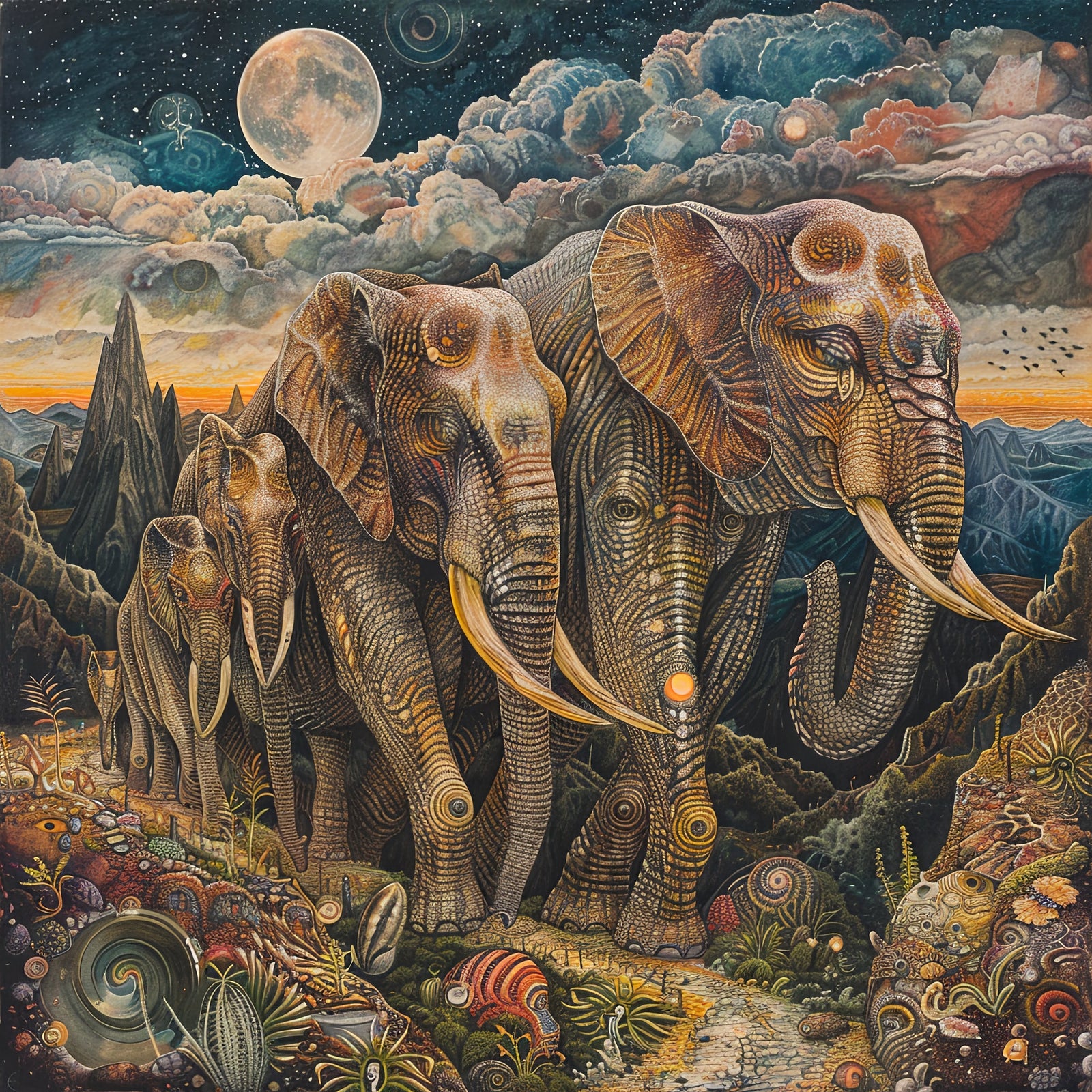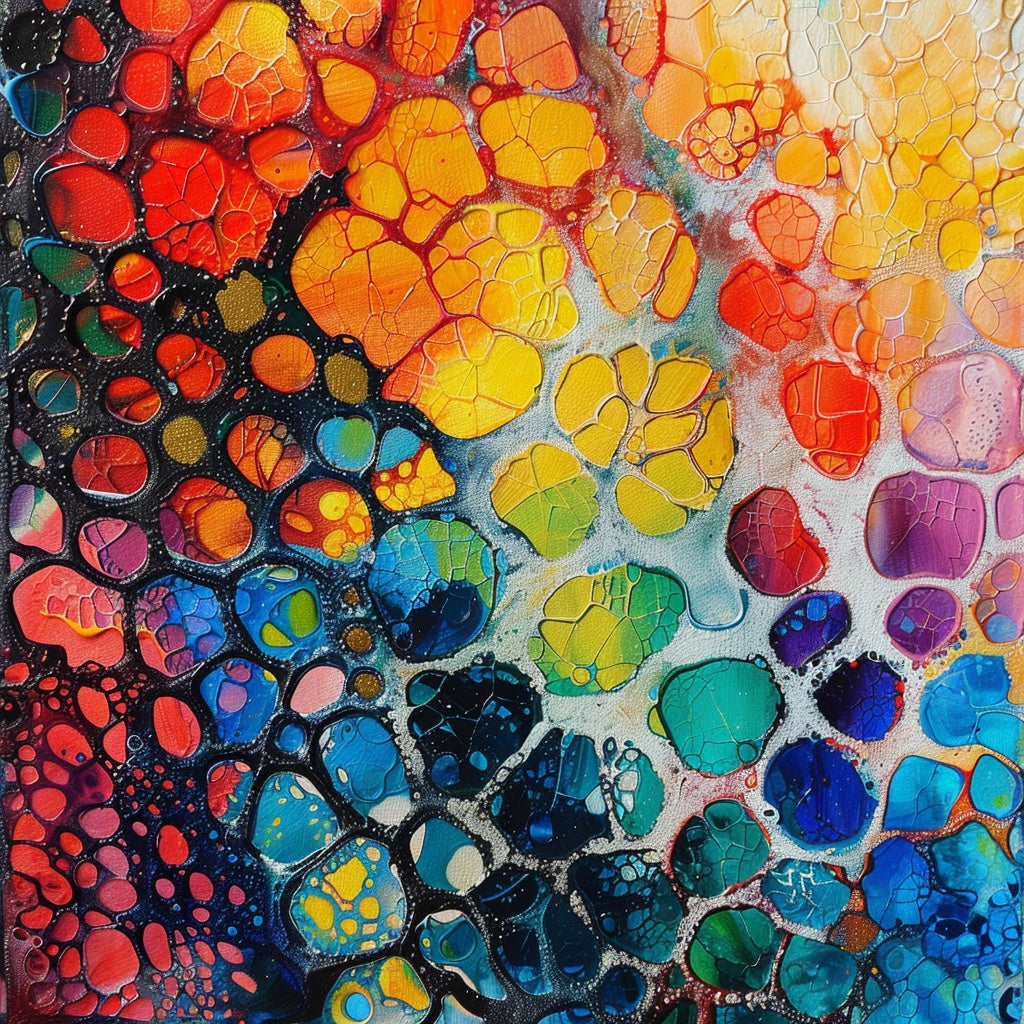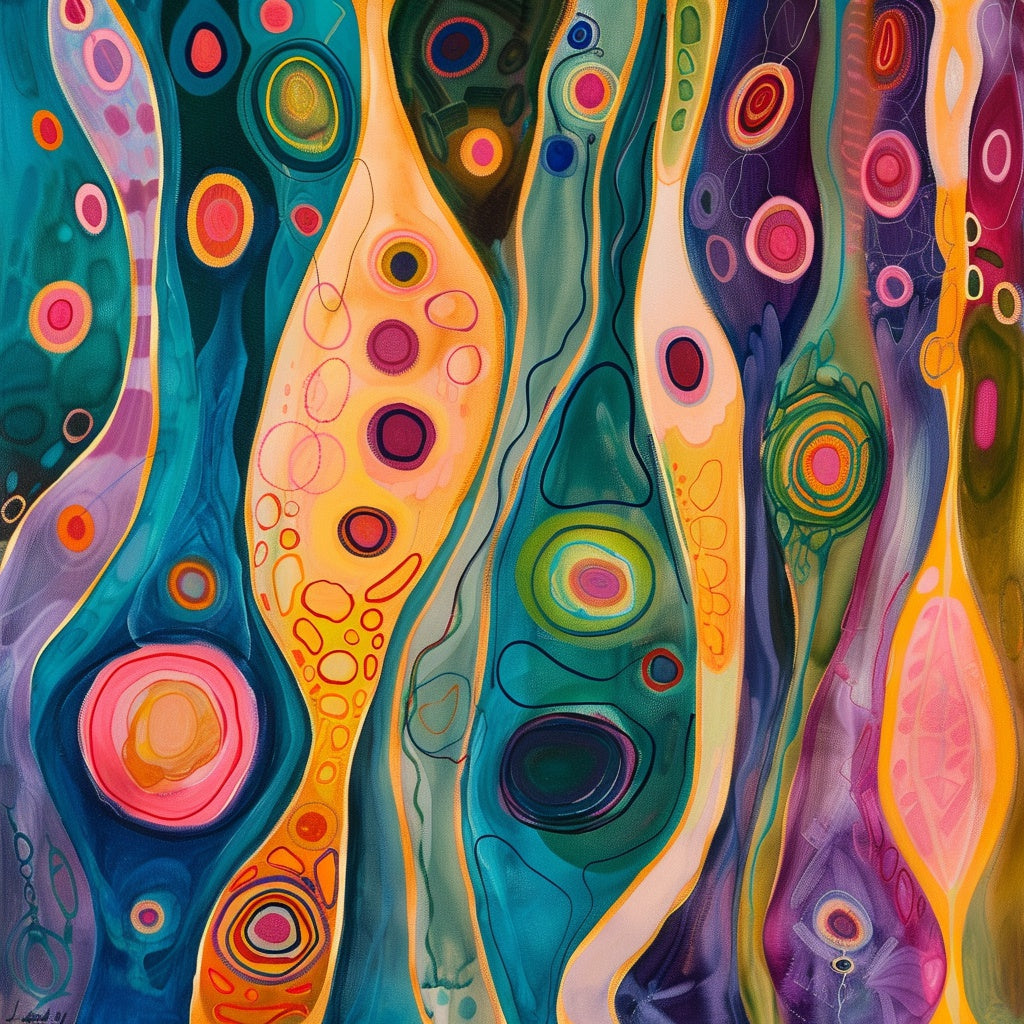AI and Human Creativity in Art: A New Era
The intersection of artificial intelligence and art is rapidly changing the creative landscape. This post explores how AI is being used in art creation, its potential benefits and limitations, and how it is being received by artists and experts alike. We'll delve into how AI art generators work, showcase examples of AI-generated art, and consider the impact of AI on the future of art.
Table of Contents
- How AI Creates Art
- The Expanding Role of AI in Art Creation
- Examples of AI-Generated Art
- Limitations of AI in Replicating Human Creativity
- Potential Benefits of AI in Assisting Human Artists
How AI Creates Art
AI art generators are powered by sophisticated algorithms and vast datasets of images and text. These datasets expose the AI to various artistic styles, genres, and influences, allowing it to recognize patterns and nuances within the data. The AI then uses this learned knowledge to produce new images based on prompts or parameters a human user sets.
Neural Networks
The neural network is at the core of AI art generation, a complex mathematical system that can learn from data and identify patterns. When an AI art generator receives a prompt, it uses its neural network to analyze the information it has learned about the elements in the prompt and then creates a new image based on that analysis. This allows the AI to combine and recombine elements novelly, creating unique and imaginative artwork. Think of it like a chef who has studied thousands of recipes and can now create original dishes by combining flavors and techniques they've learned.
Style Transfer
Another essential technique is style transfer, which enables the AI to merge multiple artistic styles into a single piece. For instance, an AI could blend the vibrant colors of Impressionism with the geometric forms of Cubism, creating a novel and intriguing piece of art. This is similar to a musician who mixes different genres to produce a new sound.
Reinforcement Learning
Some AI art generators also use reinforcement learning. This process involves a system of rewards and punishments, where the AI is rewarded for generating images that align with the desired outcome and punished for generating undesirable images. Through this iterative process, the AI learns to improve the quality of its output over time. It’s analogous to a student who learns from their mistakes, gradually refining their approach through feedback.
The Expanding Role of AI in Art Creation
AI is not just about generating images; it's changing the way we create and experience art in various ways.
Democratization of Art
One of AI's most significant impacts on art is its capacity to democratize the art-making process. As AI tools become more accessible, anyone with a computer can experiment with creating art, regardless of their artistic skills or background. This increased accessibility has sparked creativity in individuals who may not have considered themselves artists, fostering a more inclusive and diverse art community.
Pushing Creative Boundaries
AI also pushes the boundaries of what's possible in art. By generating unique and unconventional artworks, AI art creators inspire human artists to think outside the box and explore new artistic territories. They challenge established artistic norms and encourage innovation. It's like when a new scientific discovery opens up new avenues of research.
New Forms of Artistic Expression
Moreover, AI enables new forms of artistic expression, such as interactive art. AI art installations can now respond to viewer movements or inputs, creating a dynamic and engaging experience that changes over time. This interactivity adds a new dimension to art, blurring the lines between the artwork and the viewer.
Personalized Art and the Digital Art Market
AI also plays a role in the creation of personalized art. AI algorithms can generate art that adapts to the individual viewer's preferences or inputs, creating a unique and customized art experience. This personalization enhances the emotional connection between the viewer and the artwork. Furthermore, AI is shaping the digital art market by creating NFTs. AI art generators can create NFTs, providing a new platform for selling and owning AI-generated art. It's similar to how social media has reshaped communication and advertising.
Embodied AI and Art Chatbots
Another interesting development is "embodied AI," which refers to AI that can control something in physical space, like a robot arm used for painting. This allows for new forms of artistic expression and collaboration between humans and machines. Additionally, AI is being used to create art chatbots, which can be used for art education and interactive art installations. These chatbots provide information about art history, techniques, and artists and can also engage viewers in conversations about the art.
Examples of AI-Generated Art
The world of AI art is filled with impressive and thought-provoking examples. Here are a few notable ones:
- Portrait of Edmond de Belamy: Created by the Paris-based collective Obvious, this portrait was generated by an AI algorithm trained on a dataset of 15,000 portraits from the 14th to the 19th centuries. It was sold at Christie's auction house for $432,500, marking a significant moment in the history of AI art.
- Théâtre D'opéra Spatial by Jason M. Allen: This AI-generated artwork won in the emerging digital artists category at the Colorado State Fair's annual art competition, sparking debate among artists.
- Memories of Passersby I by Mario Klingemann: This artwork uses neural networks to create real-time portraits. The art is the computer code, not the fleeting images it generates.
- Neural Zoo by Sofia Crespo: This project explores the mechanics of creativity by blending familiar components into entirely new creations.
- DeepDream by Google: This program uses algorithmic pareidolia to create a dream-like, psychedelic version of existing images.
- Artificial Realities by Refik Anadol: This project combines massive datasets of coral images to raise awareness for climate change.
- Unique labels by Nutella: Nutella used AI to create seven million unique jar labels for the Italian market, increasing demand and consumer interest.
- BMW's digital art campaign: BMW collaborated with a creative technologist and art collector to train AI on 900 years of art history and create 50 new works of art, which were then projected onto a virtual rendition of the 8 Series Gran Coupe.
- Imaginary I Love Lucy toys: Fast Company used DALL-E to generate images of "I Love Lucy" toys, showcasing the potential of AI in product design and nostalgia.
In addition to these contemporary examples, it's essential to acknowledge the long history of human artistic expression. Some of the oldest known artworks, dating back thousands of years, include cave paintings and bone carvings created by early humans and even Neanderthals. These ancient artworks provide valuable insights into human creativity's evolution and the enduring desire for artistic expression.
Limitations of AI in Replicating Human Creativity
While AI art generators can produce visually impressive artwork, they still face limitations in replicating human art's emotional depth, originality, and contextual understanding.
Lack of Emotional Understanding
One of the main limitations is that AI cannot truly understand the meaning or emotion behind art. While AI can identify patterns and replicate styles, it cannot grasp the more profound significance of a work of art or the emotional experiences and intentions of the artist. This lack of emotional depth can make AI-generated art feel sterile or lacking in soul. This is similar to a parrot mimicking human speech without understanding its meaning.
Dependence on Existing Data and Originality
Another limitation is that AI art generators are often reliant on existing data. AI art sometimes feels derivative or unoriginal, recombining and remixing elements from existing works. While AI can generate variations and combinations, it struggles to produce original or groundbreaking work that breaks free from historical constraints. It's like a song remix; it might be creative but based on something already existing.
Lack of Contextual and Cultural Understanding
Furthermore, AI cannot understand context and cultural significance. It cannot grasp the deeper meaning behind artistic expressions or the cultural and historical influences that shape human creativity. This can lead to AI-generated art that feels disconnected from the human experience and lacks cultural authenticity. It is like translating a poem using only a dictionary; you might get the words right but miss the nuances.
Difficulty in Creating Unique or Surprising Images
Additionally, AI art generators can struggle to create truly unique or surprising images. While AI can generate novel combinations, it often relies on existing patterns and styles, making producing truly unexpected or groundbreaking results difficult. It can create something new but not something wholly different.
Variability in Quality and Potential for Decreased Motivation
Moreover, the quality of AI-generated art can vary significantly. While AI can create stunning artwork, it can also produce much low-quality work. Sorting through AI-generated content to find high-quality pieces can be time-consuming and challenging. There are also concerns that the increasing prevalence of AI in art could decrease individual motivation to engage in artistic creation. If AI becomes an easy solution for creating art, it might discourage some individuals from pursuing their artistic endeavors.
Limitations in Concept Art
Finally, AI art generators cannot produce the same image from a different perspective or angle, a common request from clients in concept art. This limitation can restrict the use of AI in specific artistic applications.
Potential Benefits of AI in Assisting Human Artists
Despite its limitations, AI can be a valuable tool for human artists, offering a range of potential benefits.
Generating Ideas and Overcoming Creative Blocks
AI can help artists overcome creative blocks by generating new ideas and exploring different artistic styles. This can be particularly helpful for artists experimenting with new techniques or expanding their creative horizons. It's like having a brainstorming partner who is always full of ideas.
Automating Tedious Tasks
AI can automate repetitive tasks such as color selection, image manipulation, and creating drafts, allowing artists to focus on more conceptual and creative aspects of their work. This can save artists time and resources, making them more efficient and productive. It’s like having an assistant who takes care of the mundane tasks so you can focus on the important ones.
Enhancing Artistic Expression
AI can provide artists with new tools and techniques to enhance their artistic expression, such as generating complex patterns, manipulating images, and creating interactive installations. This can lead to the creation of unique and innovative artworks that were impossible before. It’s like getting a new set of paints that allow you to create effects you couldn’t before.
Expanding Creative Possibilities
AI can help artists explore new creative territories and push the boundaries of traditional art forms by generating unconventional and unexpected results. This can lead to the discovery of new artistic styles and expressions. It’s like going on an adventure and discovering a new landscape you’ve never seen before.
Restoring Damaged Artwork
AI can assist in restoring old and damaged artwork. By analyzing the style and technique of the original artist, AI can help art restoration experts by producing images of what the original, undamaged artwork may have looked like. It’s like using forensic science to reconstruct a historical document.
Supporting Art Galleries and the Art Market
AI can be used as a research tool for art galleries and to track market trends. Automating research and analysis tasks can help galleries save time and resources. AI can also be used to identify and authenticate artworks. It's like having a powerful search engine for the art world.
Promoting Diversity and Inclusivity
AI can increase diversity in art creation by overcoming linguistic, cultural, and geographic barriers. This can make art creation more inclusive and accessible to a broader range of people. AI can also be used to democratize the field of music by suggesting lesser-known composers and musical traditions. It's like breaking down barriers so that more people can participate in the art world.
The relationship between AI and art is still evolving. AI art is a new and different art form that is here to stay, and artists need to adapt to this new reality. By embracing AI as a tool and exploring its potential, artists can push the boundaries of their work and create new forms of artistic expression. The increasing prevalence of AI-generated art might also lead to a renewed appreciation for human creativity and craftsmanship. As AI-generated content becomes more commonplace, the unique qualities of human-created art, with its emotional depth, originality, and imperfections, might become even more valuable and sought after.
Footnotes
AI Artwork That Will Blow Your Mind! - Book An Artist Blog
Opinion: AI Is Destroying Artists - The Bruin
What Is AI-Generated Art? | IxDF - The Interaction Design Foundation
What is AI art & how does it work? - Adobe Firefly
Top 25 AI Artists - Photos, Bios, Exhibitions - History of AI Art- AIArtists.org
Exploring the Future of AI Art Creators: A Comprehensive Guide - Ocoya
AI & Photoshop - Artificial Intelligence: How AI is Changing Art - Aela Design
10 Mind-Blowing Examples of AI-Generated Art - ClickUp
13 of the world's oldest artworks, some crafted by extinct human relatives | Live Science
AI vs Human Creativity: Which One Will Win? - AIContentfy
AI Art: Exploring the Pros, Cons, and Ethical Dimensions - Vision Factory
Generative AI — Never Truly Creative? | by Axel Schwanke | Medium
Advantages and Disadvantages of AI in the Art World - Artezaar.com
50 arguments against the use of AI in creative fields - Aoki Studio
The Downside of AI Art: Why It Can't Replace Human Creativity - Digital Brew
Using AI Tools to Create Art - AI Tools for Students - Research Guides - LibGuides
Exploring the Benefits of AI Art: Revolutionizing Creativity - Artsmart.ai
The Impact Of Artificial Intelligence On The Art World - Forbes
Is art generated by artificial intelligence real art? - Harvard Gazette
The Debate on AI Art vs. Human-Made Fine Art: A Perspective | New Buffalo Art Gallery
Perspectives on the AI Art Debate : r/ArtistHate - Reddit
What AI art means for society, according to Yale experts - Yale Daily News
The Ethical Implications of AI on Creative Professionals | by Dirk Steynberg - Medium
Art in the Age of AI: The Changing Role of Artists - AGI Fine Art Blog
We Used AI Painting to Recreate 10 Renaissance Masters - SimplyKalaa
AI, Art, and Creativity: Exploring the Artist's Perspective - Salzburg Global
AI-Generated Art: How Can Visual Artists Navigate This New Frontier of Creativity?



Leave a comment (all fields required)